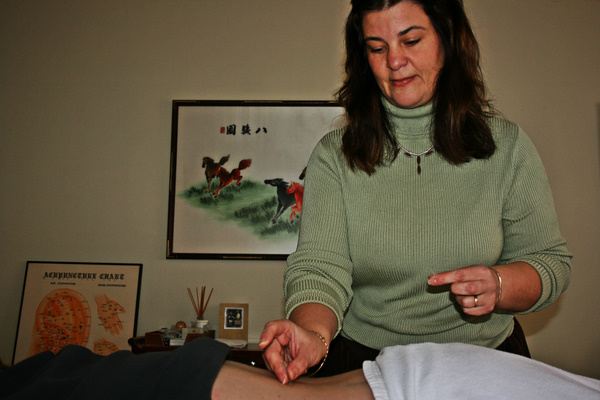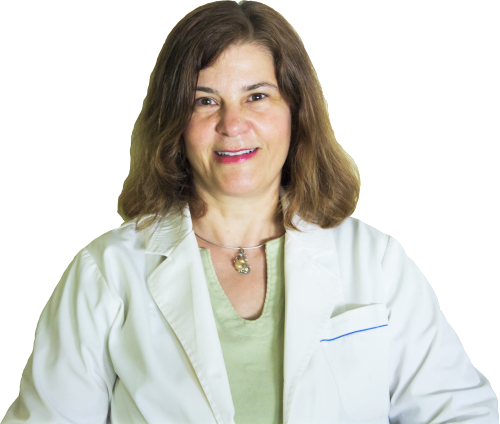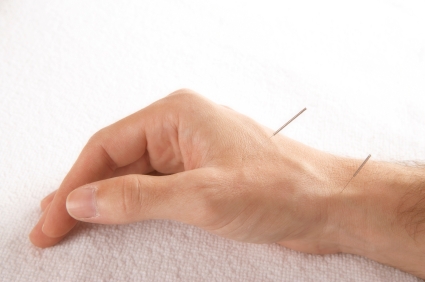The term “Traditional Chinese medicine” T.C.M., makes reference to a number of practices, especially acupuncture, moxibustion and herbal formulas and their theoretical basis that has developed in China during a period of about 2,500 years. A theory of nature –and of health and disease– was set forth in the concepts of two essential forces yin and yang, the five elements, six climatic influences, seven emotional factors, eight principles of therapy, fourteen meridians, and other notions numbered as an aid to memorizing the information.

Ancient but Still Alive
The Huang-di Nei-jing or Inner Classic of the Yellow Emperor is the source of all Chinese medical theory, the Chinese equivalent of Hippocratic corpus. Complied by unknown authors between 300 and 100 B.C.E., it is the oldest of the Chinese medical texts. The knowledge and theoretical formulations it contains are the basic medical ideas developed and elaborated by later thinkers.
In China today, the primary textbooks used to train traditional doctors are contemporary interpretations and clarifications of Qing dynasty (1644-1911) formulas and commentaries. These books are, in turn, clarifications of Ming dynasty (1368-1644) reworkings, which are also reworkings of earlier material. This process goes all the way back to Han dynasty (202 B.C.E.-220 C.E). Such transmission through the dynastic pathway not only preserved and encapsulated the original sources, but also elucidated and reformed them.
The Yin-Yang And The Five-Element Theory In T.C.M.
T.C.M. considers everything has two sides, they are called Yin and Yang. The Yin and Yang are philosophical terms in ancient China, referring to the things or characters opposite to each other. The condition which appears as active, external, upward, hot, bright, functional, exciting and hyperactive is attributive to Yang. The condition which appears as asthenic, internal, downward, cold, dim, material, inhibitive and declining is attributed to Yin.
Yin-Yang theory is widely used in T.C.M., for explaining the physiological and pathological phenomena of the human body and for directing the diagnosis and treatment of a disease. For example superficial syndrome, heat syndrome, sthenic syndrome are attributed to Yang. Interior syndrome, cold syndrome, asthenic syndrome are attributed to Yin.
The five element theory is a theory based on philosophy in ancient China, classifying the material characters and the mutual relationship of the five elements which are considered as the essential constituents of the material universe. Their motion is in accordance to certain rules (germination, restriction, etc). In T.C.M. the five element theory is mainly used for explaining the properties of the five viscera organs (liver, heart, lung, spleen, kidney) of the human body, their mutual relations, physiological phenomena and pathological changes. It also serves as a guide for diagnosis and treatment. The five element cycle is arranged in a definite order..
T.C.M. considers that heart is fire, liver is wood, spleen is earth, lung is metal and kidney is water, which are the five viscera organs.
The term for five viscera organs do not completely match those used in western medicine from the stand point of anatomy and physiology. In T.C.M they are considered functional systems and their suffering causes disease. So the physiology and pathophysiology in T.C.M are very important.
Vital substances in T.C.M.
- Vital energy is the motive force of internal organs and the tissues of the body as well. It has five functions: a) promotion function b) warming function c) defensive function d) checking function e) nourishing function.
- Blood is an important component of the body derived from the refined substance of the food through a series of complex processes. It circulates in the blood vessels to nourish all parts of the body.
- Body fluids. For instance, sweat, saliva, stomach fluid, intestinal fluid, urine etc. Their function is to moisten the skin, the hair, the muscle, the throat, the joints etc.
Meridians
Meridians are important components of the human body. Meridians and their collateral’s act as an important route for circulating vital energy and blood, connecting viscera with extremities, communicating the upper with the lower and the interior with the exterior and regulating the activities of viscera and other parts of the body. The meridians play a important role in joining the tissues and organs of the body to build up an organic entity.
There are fourteen regular meridians in the body and they are the main passages connecting different parts of the body in which the vital energy and blood circulates. The meridian energy flows through the meridians in regular vicious cycle by definite order.
Selection of treatment based on the differential diagnosis
Making a diagnosis and selecting the treatment is based on the analysis and comprehension of the clinical data collected by the four methods of examination with the basic theories of the five viscera organs (liver, heart, lung, spleen, kidney) meridians and pathogens.
Four Methods of Examination:
- Inspection: Observing the patient’s mental status, posture, appearances of the tongue and its fur, the quality of urine, feces and other excretions and secretions.
- Listening and smelling: Listen to patient’s voice during speaking, breathing, coughing and moaning, and to smell the odor of the secretion and excretion.
- Inquiring: Interrogate the patient about his present illness, past history, menstruation and childbirth history, living and food habits, as well as age, native place, occupation and other related information.
- Palpation: Various parts of body surface of the patient are palpated for the purpose of investigating the condition of the pulse, chest, abdomen and extremities to establish a diagnosis.
Major therapeutical methods in T.C.M.
A. Methods of treatment by Chinese herbal medicine
Treating a disease in Chinese medicine focuses on ridding the body of the invading pathogens, restoring normal circulation and flow of blood and Qi, promoting emotional harmony and fortifying the Kidney/Vitality system. Effective treatments include acupuncture, warming needle, point injection therapy, Qi Kong, moxibustion, herbal and dietary therapies, cupping, scrapping, massage and exercise.
There are eight methods of treatment used in Chinese herbal medicine.
- Diaphoresis therapy; It possesses the actions of antipyretic, promoting eruption, reducing edema and antirheumatic by inducing perspiration.
- Emetic therapy; Elimination of harmful substances from the throat, esophagus and stomach by the application of drugs or physical stimuli that can induce vomiting.
- Purgation therapy; A treatment of eliminating the undigested food by the application of mild purgatives.
- Regulating therapy; Includes various treatments such as the dispersion of stagnated liver-energy, the coordination of the functions of the liver and spleen or of the liver and stomach.
- Warming therapy; Expelling cold by warming the meridians, rejuvenating the depleted Yang, lowering fever with drugs of sweet flavor and warm nature.
- Heat – clearing therapy; A treatment of clearing away the heat with cold natured herbs, applicable to febrile diseases of heat – syndrome.
- Invigoration therapy; A therapy for various types of asthenia syndrome, generally classified into invigoration of vital energy, toning the blood, invigoration of Yin and Yang.
- Dispelling therapy; A treatment for dispersing stagnated energy, blood stasis, phlegm-wetness, undigested foods.
Herbal therapies are best for functional disorders, hormonal imbalances, and “organic problems” (change in tissue structure). The effects of herbs are usually seen after several days of regular use, rather than immediately, but once the effects are established, they often persist for a long time. The use of acupuncture plus herbs usually provides the most dramatic results.
B. Dietary Therapy
Avoiding foods that produce dampness or mucous that may further obstruct the flow of Qi and blood in the channels, therefore exacerbating the pain.
Foods to avoid:
- Cow milk products (milk, cheese, butter, ice cream, etc.).
- Night shade vegetables (tomato, eggplant, peppers, potato).
- Deep fried and fatty foods.
- Cold foods.
- Wheat. Alcohol. Coffee. Sugar.
C. Methods of treatment by acupuncture and moxibustion
Acupuncture therapy; Application of metal needles such as filiform needle, intradermal needle and plum-blossom needle are used to stimulate certain specific superficial definite locations for the treatment of a disease. In cases of blood transmitted disease or skin lesions electro-acupuncture or laser beam acupuncture is applicable.
Acupuncture is a very safe system of health care when done by a well-trained practitioner. It feels like a needle prick but nothing like getting an injection. During the treatment the patient will experience some sensations of energy movement, but not pain. Most people fall asleep when left with the needles, and wake refreshed and relaxed.
The number of treatments varies according to the condition. Acute problems may respond with just a few treatments. A chronic problem that exists for years may require a longer series of treatments. Treatments are usually once or twice a week.
Moxibustion therapy;A method of applying therapeutic heat produced by ignited moxa wool or roll, over the well defined skin surfaces. The moxa is made by an herb called “Artemisia Bulgaris”.
D. Other methods of treatment
Massage; a) Also called pushing and grasping; a method of prevention and treatment of diseases by applying various massage manipulation, or by passive movements of extremities. b) One of the eight manipulations of bone setting, used for relaxing the muscles, dissipating blood stasis and promoting subsidence of swelling.
Qigong (breathing exercise); A mental and physical self training for the prevention and treatment of diseases and also for health care and prolongation of life, by which life activities are self-adjusted and self-controlled with the help of the inducement of mind and the regulation of respiration and spirit.
Cupping; Using heated cups, cupping is designed to vastly increase circulation to affected areas, ridding toxins and waste products that aggravate inflammation and introducing the tissues to fresh nutrients and oxygen.
Scrapping; Using tools made from antler horn, to break scarring on soft tissue, release muscle congestion, usually used in combination with cupping and electroacupuncture.
Therapeutic exercises; Taiji, Gong fu, jogging five animal exercises and other exercises prevent disease and strengthen the human body.
Acupuncture Analgesia
Over the past 45 years knowledge about the physiological basis of control of pain has increased more than at any time in the history. This growth has been based mainly on studies on the neural and neurochemical basis of inhibition of pain at various levels of the central nervous system such as the spinal cord, the brain stem, and higher subcortical center. Although acupuncture was introduced in the Western world as early as in the 1600 century it remained largely unknown until the first reports of operations under acupuncture analgesia were reported from China. Research on the neurochemical mechanisms of acupuncture analgesia has been conducted in the Department of Physiology, Beijing Medical University since 1965. More than300 papers have been published, most of them in Chinese.
Can modern and Chinese medicine be combined?
Not only can the two systems of medicine be combined, they can enhance each other’s effects. Chinese herbs may make it possible to take a lower dosage of modern medicines, to reduce their side effects, and obtain a better overall effect. Modern drugs may provide emergency relief for serious conditions that will allow long-term application of Chinese herbs the rest of the time.
It is advised that modern drugs be taken at a different time (e.g. an hour apart) from herb combinations in order to avoid any chance of interaction, and that monitoring of the effects of the drugs be continued, and perhaps increased, while an herb therapy is being used. Acupuncture is compatible with virtually all modern techniques.
Concluding remarks
Traditional Chinese medicine can be considered an art, and it can claim to be a science. But the important question is: Does it work? Is Chinese medicine just an interesting philosophical curiosity or is it a viable system of healing? Can it treat what the West defines as real diseases? And can Western science measure its results and appreciate its value?
Because of the unique history of modern China, traditional medicine has been the subject of comprehensive study and testing over the past forty five years.
Western clinical studies of traditional Chinese medicine, by proving its practical efficacy, have helped it win its battle for survival in the twentieth century, and promise it a place in the future of medicine.
Acupuncture Analgesia
Over forty years of research have been devoted to Acupuncture Analgesia. On November 3rd 1997, the National Institute of Health sponsored a NIH Consensus Development Conference to evaluate the scientific and medical data on the uses, risks, and benefits of acupuncture procedure for a variety of conditions. Most of the research was on diverse pain conditions. Since 1965 the research team of Professor Jisheng Han, of Beijing Medical University Health and Science, has devoted themselves to the clarification of the neurochemical mechanisms of pain relief by acupuncture. Over 300 scientific papers have been published in the past 4 decades.
The ancient healing art of acupuncture seems to be revitalized in the era of modern medical sciences due to the identification of its high costeffectiveness and the partial unraveling of its scientific mechanisms of action. Hubei Science and Technology Press has published in 1998, in English, the summary of the research achievements on the Neurochemical Basis of Pain relief by Acupuncture obtained in the years 1987-1997 by Professor Jisheng Han. The use of modern scientific methodology is absolutely essential for the clarification of the scientific basis of acupuncture therapy. Research on the physiology of acupuncture has been contributing to the development of neuroscience from the molecular level to the behavioral. High-quality scientific research will certainly pave the way for the acceptance and more popular use of acupuncture and related techniques for the benefit of patients suffering from chronic pain and many other functional disorders.

